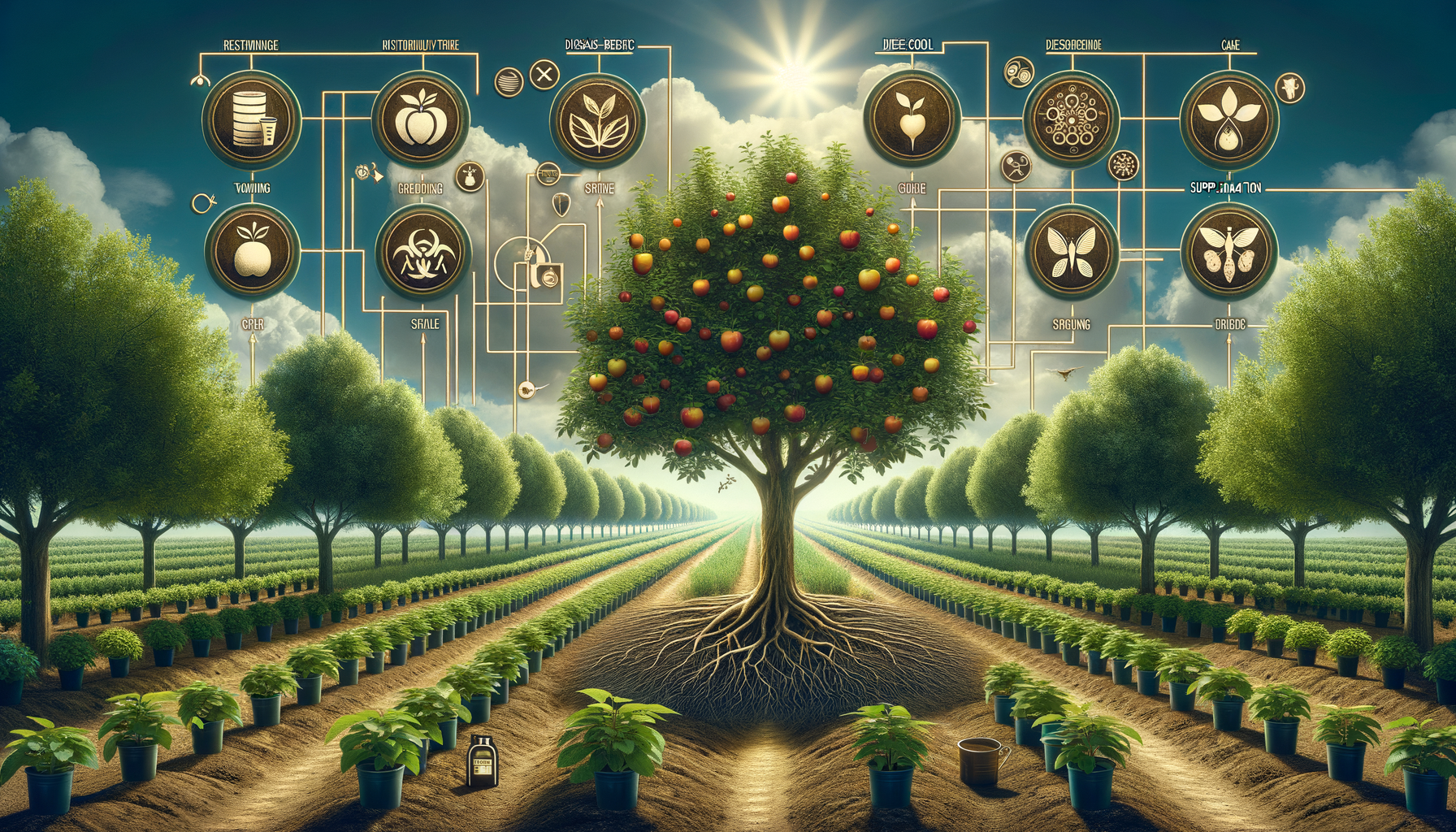Introduction to Fruit Tree Cultivation
Fruit trees are a wonderful addition to any garden, providing both aesthetic beauty and delicious produce. Selecting the right fruit trees to plant involves understanding your local climate and soil conditions. Additionally, caring for these young trees after planting is crucial to ensure they thrive and produce bountiful harvests. This article delves into the essential aspects of fruit tree cultivation, offering insights and practical advice for gardeners at all levels.
Choosing Fruit Trees Based on Climate and Soil
When selecting fruit trees, it’s vital to consider the climate and soil of your region. Different trees have varying requirements, and planting a tree suited to your environment will significantly enhance its growth and fruit production.
For temperate climates, apple and pear trees are among the most suitable options. These trees thrive in regions with cold winters, which are essential for their dormancy and fruiting cycles. In contrast, citrus trees such as oranges and lemons are ideal for warmer climates, where they can bask in plenty of sunshine.
Soil type also plays a crucial role. Well-draining soil is generally preferred by most fruit trees, as waterlogged conditions can lead to root rot. Sandy loam is often considered one of the top options for fruit tree cultivation due to its balance of drainage and nutrient retention. Conducting a soil test can help determine the pH and nutrient levels, guiding you in selecting the right tree species.
Caring for Young Fruit Trees After Planting
Once you’ve planted your fruit trees, providing proper care is essential for their development. Young trees require regular watering, especially during their first few years, to establish a robust root system. Mulching around the base helps retain moisture and suppress weeds, which compete for nutrients.
Pruning is another critical aspect of care. It encourages healthy growth and shapes the tree for optimal fruit production. Pruning should be done during the dormant season, removing any dead or diseased branches and thinning the canopy to improve air circulation.
Fertilization supports growth, but it’s important not to over-fertilize, as this can lead to excessive foliage at the expense of fruiting. Use a balanced fertilizer and follow the recommended guidelines for your specific tree species.
Finding Disease-Resistant Fruit Tree Varieties
To minimize the challenges of pests and diseases, consider planting disease-resistant fruit tree varieties. These trees have been bred to withstand common diseases, reducing the need for chemical interventions and promoting healthier growth.
Nurseries and garden centers are excellent places to find these varieties. They often offer a selection of trees that are well-suited to local conditions and resistant to prevalent diseases. Additionally, online catalogs from reputable horticultural organizations can provide access to a wider range of options.
When choosing disease-resistant varieties, research the specific diseases common in your area and select trees that have proven resilience against them. This proactive approach not only enhances your orchard’s health but also contributes to sustainable gardening practices.
Conclusion: Creating a Thriving Orchard
By carefully selecting fruit trees suited to your climate and soil, and providing attentive care, you can cultivate a thriving orchard that yields abundant produce. Embrace the joy of nurturing these trees and enjoy the fruits of your labor for years to come. Whether you’re a seasoned gardener or a novice, the satisfaction of growing your own fruit is a rewarding experience that connects you to nature and the changing seasons.




Leave a Reply